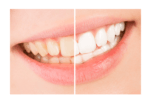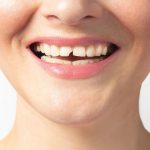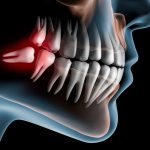Why Brushing Everyday Isn’t Enough: The Surprising Reason Behind Yellow Teeth

Your smile is often the first thing people notice about you, and yellow teeth can be a major source of embarrassment. While brushing your teeth every day is important for maintaining good oral hygiene, it isn’t always enough to prevent yellowing. There are several factors that can contribute to the discoloration of your teeth, and some of them may surprise you. One of the main reasons why brushing alone may not be enough to prevent yellow teeth is the food and drinks we consume. Coffee, tea, red wine, and soda are all known to stain teeth over time, and even healthy foods like berries and tomatoes can have a similar effect. Additionally, smoking and other tobacco products can cause significant yellowing and discoloration. While it’s important to brush your teeth regularly to remove surface stains, these deeper stains can be difficult to remove without professional intervention.
Oral hygiene is crucial for maintaining good health and preventing various dental problems. Brushing your teeth every day is not enough to keep your teeth healthy and white. Yellow teeth are a common problem that can be caused by poor oral hygiene, smoking, and certain foods and drinks. Regular brushing, flossing, and using mouthwash can help remove plaque and prevent tooth decay and gum disease. In addition, regular dental check-ups and cleanings can identify any potential problems and provide early treatment. Taking care of your oral health can also have a positive impact on your overall health, as poor oral hygiene has been linked to heart disease, stroke, and other health issues. Therefore, it is essential to make oral hygiene a daily habit to keep your teeth and gums healthy and your smile bright.
Yellow teeth are a common problem affecting people of all ages. There are several reasons why teeth may turn yellow, including poor oral hygiene, smoking, aging, and certain foods and drinks. Poor oral hygiene is the leading cause of yellow teeth, as it allows plaque and tartar to build up on the teeth, leading to discoloration. Smoking is another major contributor to yellow teeth, as it stains the teeth and causes a buildup of plaque. Aging also plays a role, as the enamel on teeth wears down over time, revealing the yellow dentin layer underneath. Additionally, certain foods and drinks, such as coffee, tea, and red wine, can stain the teeth and contribute to yellowing. Overall, maintaining good oral hygiene, avoiding tobacco use, and limiting intake of staining foods and drinks can help prevent yellow teeth.
Acidic Foods and Drinks

Acidic foods and drinks are one of the leading culprits behind yellow teeth. These types of foods and beverages can erode the enamel on your teeth, making them more susceptible to stains and discoloration. Examples of acidic foods and drinks include citrus fruits, soda, sports drinks, wine, and coffee. To protect your teeth from the harmful effects of acidic substances, it’s important to limit your intake of these foods and beverages or to brush your teeth immediately after consuming them. Incorporating foods high in calcium, such as milk and cheese, can also help to counteract the acidic effects and keep your teeth healthy and white. In addition to causing yellow teeth, acidic foods and drinks can also lead to tooth decay and gum disease. When the enamel on your teeth erodes, it exposes the sensitive dentin underneath, which can lead to painful cavities and sensitivity. Acidic substances can also irritate and inflame your gums, leading to gingivitis and other oral health problems. To protect your teeth and gums, it’s important to be mindful of your diet and to brush and floss regularly. By taking care of your oral health and avoiding acidic substances, you can enjoy a bright, healthy smile for years to come.
Acidic foods and drinks can cause erosion of tooth enamel by dissolving the mineral crystals that make up the enamel. Enamel is the protective outer layer of the tooth that is responsible for protecting the sensitive inner layers from damage. When acidic foods and drinks are consumed, the acid attacks the enamel and breaks down the mineral crystals. Over time, this can lead to the thinning of the enamel and the exposure of the underlying dentin layer. This can result in increased sensitivity, discoloration, and even tooth decay. It is important to limit the consumption of acidic foods and drinks and to maintain good oral hygiene habits to prevent erosion of tooth enamel.
There are a variety of acidic foods and drinks that can cause yellow teeth over time, even with regular brushing. Some of the most common culprits include citrus fruits like lemons and oranges, as well as acidic beverages such as coffee, tea, and wine. Sugary and carbonated drinks like soda and energy drinks can also lead to discoloration, as can foods high in sugar and starches like candy and bread. Even seemingly healthy options like tomato sauce and certain types of berries can contain enough acid to wear away at tooth enamel and cause yellowing. While it’s still important to brush and floss daily, it’s also a good idea to limit consumption of these acidic substances and rinse your mouth with water after eating or drinking them.
Consuming acidic foods and drinks can be detrimental to the health of our teeth. However, there are ways to minimize the damage caused by these substances. One tip is to drink acidic beverages through a straw to minimize contact with the teeth. Another tip is to rinse the mouth with water after consuming acidic foods and drinks to help neutralize the acid. Additionally, it is recommended to wait at least 30 minutes after consuming acidic substances before brushing your teeth as the acid can weaken the enamel and brushing immediately can cause further damage. By following these tips, we can reduce the negative effects of acidic foods and drinks on our teeth and maintain a healthier smile.
Tobacco Use
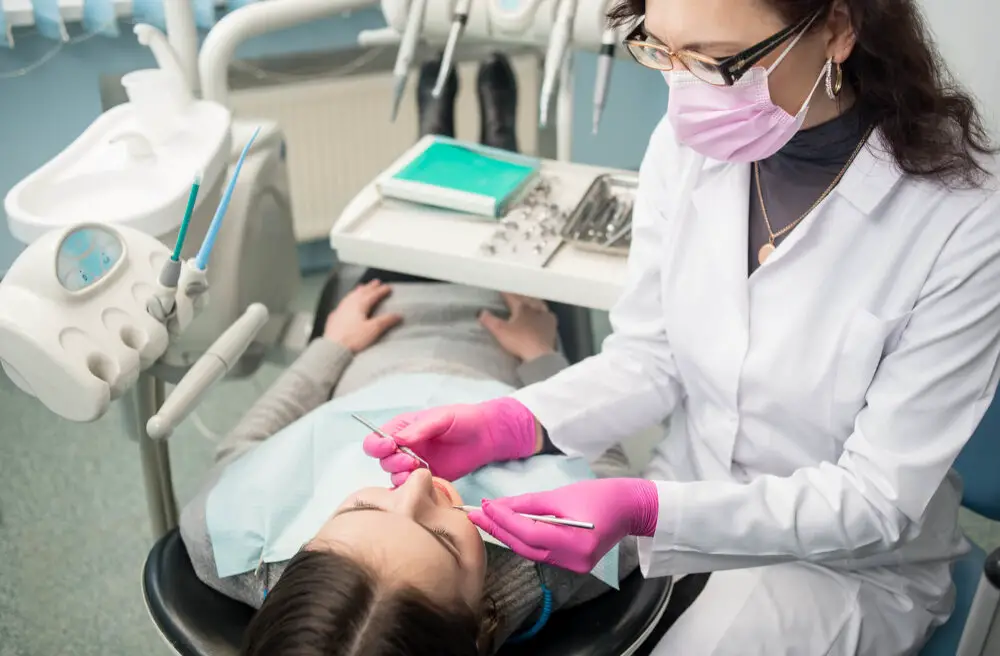
Tobacco use is a significant contributor to yellow teeth and other oral health problems. Smoking cigarettes, cigars, or using smokeless tobacco products can cause stains on teeth that are difficult to remove with just brushing. The nicotine and tar in tobacco products can seep into the enamel of teeth, resulting in a yellow or brownish tint. Additionally, tobacco use can lead to gum disease and tooth decay, which can further damage teeth and cause them to appear yellowed. While quitting tobacco use altogether is the best way to prevent yellow teeth and other oral health issues, reducing the frequency and quantity of tobacco use can also help. Using teeth whitening products, such as whitening toothpaste or strips, can help remove surface-level stains caused by tobacco use. However, it is important to note that these products may not be effective for deeper stains caused by long-term tobacco use. Ultimately, the best way to maintain a bright, healthy smile is by practicing good oral hygiene habits and avoiding tobacco use altogether.
Tobacco use, whether it be smoking cigarettes, cigars, or using chewing tobacco, can cause yellow teeth due to the chemicals found in these products. The tar and nicotine in tobacco are absorbed into the enamel of the teeth, causing discoloration and staining over time. Additionally, the heat from smoking can cause the teeth to become dehydrated, making them more susceptible to staining. The longer a person uses tobacco products, the more yellow their teeth can become. Quitting tobacco use, along with regular brushing and dental cleanings, can help to prevent further staining and improve overall oral health.
Tobacco use in any form can lead to yellow teeth. Smoking cigarettes is the most common culprit, as the tar and nicotine in tobacco can easily stain teeth. Smokeless tobacco products, such as dip or chew, can also cause yellowing of the teeth due to their high concentration of tobacco and other harmful chemicals. Furthermore, inhaling secondhand smoke can also contribute to tooth discoloration. Even electronic cigarettes, or e-cigarettes, which are marketed as a safer alternative to traditional cigarettes, can lead to yellow teeth due to the nicotine and other chemicals present in the vapor. The only way to prevent yellow teeth caused by tobacco use is to quit using tobacco products altogether.
Although this paragraph doesn’t seem to match the article’s title, I will provide a paragraph on tips to quit tobacco use. Quitting tobacco can be a challenging task, but it is worth the effort to improve your health and well-being. Some tips to quit tobacco use include seeking support from family and friends, finding healthy ways to cope with stress, avoiding triggers, such as alcohol, caffeine, and other smokers, and creating a plan for quitting, including setting a quit date and identifying potential obstacles. Other helpful strategies may include using nicotine replacement therapy, such as gum or patches, or seeking professional help from a healthcare provider or support group. Remember, quitting tobacco is a process, and setbacks may occur, but with perseverance and determination, it is possible to break the tobacco addiction and lead a healthier life.
Poor Oral Hygiene Habits

Poor oral hygiene habits are the primary cause of yellow teeth. Many people think that brushing their teeth once a day is enough, but this is not the case. Brushing alone cannot remove all the plaque and bacteria that accumulate on your teeth over time. You must floss your teeth and use mouthwash in addition to brushing to maintain good oral hygiene. Neglecting this routine can lead to a buildup of plaque, which can cause cavities, gum disease, and yellow teeth. Another bad oral hygiene habit is consuming too many sugary and acidic foods and drinks. These substances can erode your tooth enamel, making your teeth more susceptible to staining and discoloration. Smoking and chewing tobacco are also harmful to your oral health. Nicotine and tar from cigarettes can stain your teeth and cause bad breath. Poor oral hygiene habits can not only make your teeth yellow but also weaken your teeth and gums. Therefore, it is essential to establish good oral hygiene habits and stick to them to maintain healthy teeth and gums.
Poor oral hygiene habits can lead to yellow teeth by allowing plaque, a sticky film of bacteria, to accumulate on their surface. Plaque produces acids that erode the enamel, the protective layer of teeth, exposing the underlying dentin, which is naturally yellow. Additionally, consuming foods and drinks high in chromogens, which are pigmented molecules that stick to enamel, can stain teeth over time. Tobacco use and some medications can also contribute to yellowing teeth. Regular brushing, flossing, and dental checkups can remove plaque and prevent stains from setting in, maintaining a healthy and bright smile.
Improving oral hygiene habits can be a game-changer when it comes to maintaining a healthy smile. Brushing twice a day is just the beginning. Flossing daily removes plaque and food particles from between teeth that a toothbrush can’t reach. Using mouthwash after brushing and flossing can kill lingering bacteria and freshen breath. It’s also important to replace your toothbrush every three to four months, as old bristles can harbor bacteria. Cutting back on sugary and acidic foods and drinks can also help prevent yellowing of teeth. By incorporating these habits into your daily routine, you can achieve a brighter, healthier smile.
Medical Conditions and Medications
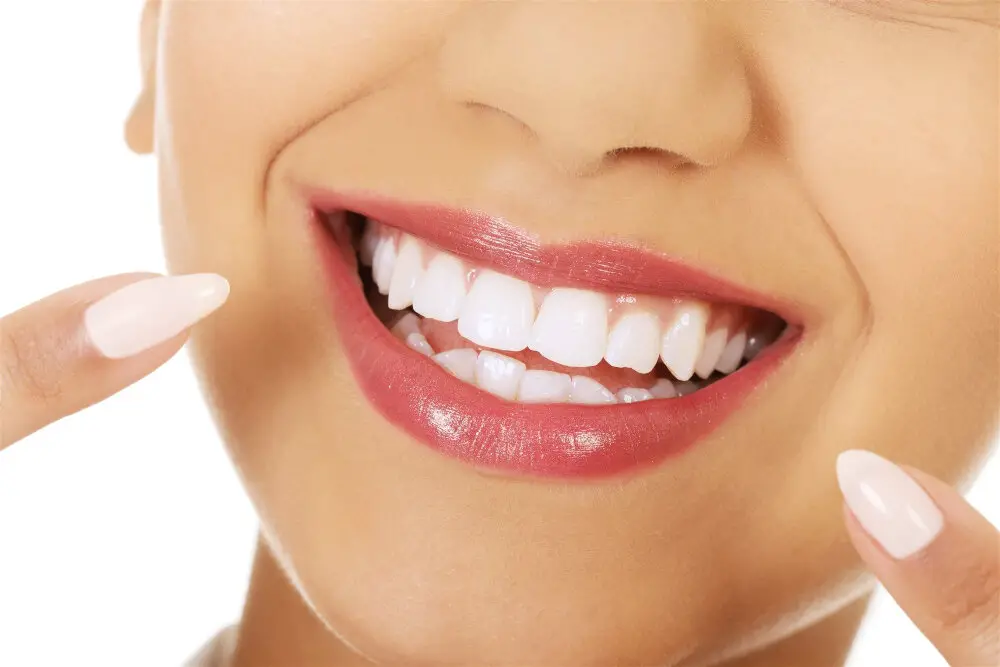
Medical conditions and medications can have a significant impact on the color of your teeth. Certain illnesses and health conditions can cause discoloration or yellowing of teeth, including liver disease, diabetes, and cancer treatments. Additionally, medications such as antihistamines, antibiotics, and high blood pressure medications can also cause teeth discoloration. If you suffer from any of these conditions or take any of these medications, it’s important to talk to your dentist about the best ways to maintain a healthy and bright smile. In some cases, medical conditions and medications can also affect the development of teeth, leading to white or brown spots on the enamel. This type of discoloration can be caused by conditions such as celiac disease or excessive fluoride intake. It’s crucial to discuss any medical conditions or medications you’re taking with your dentist, as they can provide advice on how to minimize any negative effects on your teeth. By working together, you can develop a plan to keep your teeth healthy and bright, even in the face of medical challenges.
Yellow teeth can be caused by a variety of factors, including certain medical conditions and medications. One such condition is jaundice, which causes a yellowing of the skin and eyes due to an excess of bilirubin in the blood. This excess can also affect the teeth, resulting in a yellowish tint. Additionally, certain medications such as tetracycline, a common antibiotic, can cause yellowing of the teeth, particularly if taken during childhood when the teeth are still developing. Other medications, such as antihistamines and high blood pressure drugs, can also contribute to yellowing teeth by causing dry mouth or reducing saliva flow, leading to a buildup of bacteria and plaque. It is important to address the underlying medical condition or medication use in order to effectively treat yellow teeth.
Yellow teeth can be caused by a variety of medical conditions and medications. One common medical condition that can lead to yellowing of the teeth is jaundice, which occurs when the liver is unable to properly process bilirubin. Another condition that can cause yellow teeth is fluorosis, which occurs when the teeth are exposed to too much fluoride during development. Certain medications, such as tetracycline antibiotics and antihistamines, can also cause yellowing of the teeth. Additionally, lifestyle factors such as smoking and excessive consumption of coffee, tea, and red wine can contribute to yellowing of the teeth. It’s important to address these underlying causes in addition to regular brushing in order to achieve and maintain a bright, healthy smile.
If you are experiencing yellow teeth due to a medical condition or medication, it is important to manage both your condition and your teeth. First, consult with your healthcare provider to determine if there are alternative medications that do not cause tooth discoloration. Secondly, practice good oral hygiene by brushing twice a day with a fluoride toothpaste, flossing daily, and using an antiseptic mouthwash. Additionally, limit your intake of sugary or acidic foods and drinks, as they can contribute to tooth decay and discoloration. Finally, consider professional teeth whitening treatments or dental veneers to restore your smile’s brightness. By managing both your health and oral hygiene, you can maintain a healthy smile despite the side effects of your medication or medical condition.
Yellow teeth can be caused by a variety of factors, including poor dental hygiene, aging, genetics, and lifestyle habits. Consuming foods and drinks that are highly pigmented or acidic, such as coffee, tea, red wine, and citrus fruits, can also contribute to yellowing. Smoking and using tobacco products can stain teeth and lead to a yellowish appearance. Some medications and medical conditions, such as certain antibiotics and liver disease, can also cause yellowing. Despite brushing every day, these causes can accumulate over time and lead to yellow teeth, emphasizing the importance of regular dental check-ups and preventative care.
Preventative measures are crucial when it comes to maintaining good oral hygiene. While brushing every day is a necessary habit, it is not enough to keep your teeth healthy and white. Yellow teeth can be caused by various factors, such as poor brushing technique, consuming sugary foods and drinks, smoking, and even certain medications. Therefore, it is essential to take preventative measures to avoid yellowing teeth. This includes flossing daily, using mouthwash, limiting sugary and acidic foods, avoiding smoking, and visiting the dentist regularly for check-ups and professional cleaning. By implementing these preventative measures, you can ensure that your teeth stay healthy and white, and you can maintain a beautiful smile for years to come.
In conclusion, maintaining healthy teeth requires more than just brushing. While brushing is essential, it is not enough to prevent the yellowing of teeth. It is crucial to adopt a comprehensive oral hygiene routine that includes flossing, tongue scraping, and using mouthwash. Additionally, a balanced diet that is low in sugar and high in calcium and vitamin D is essential for maintaining strong and healthy teeth. Regular dental check-ups and cleanings are also necessary to detect and treat any dental issues early on. By implementing these practices, you can ensure that your teeth remain healthy, strong, and free from yellowing.
Conclusion

In conclusion, simply brushing your teeth every day may not be enough to prevent yellow teeth. The surprising reason behind this discoloration may be due to a variety of factors such as diet, lifestyle choices, and genetics. Consuming acidic or sugary foods and drinks, smoking, and neglecting oral hygiene can all contribute to the formation of yellow teeth. However, with proper dental care and regular visits to the dentist, you can maintain a healthy and bright smile. It is essential to understand the various causes of yellow teeth, take preventative measures, and seek professional assistance if necessary to achieve optimal oral health. Remember, a healthy smile not only boosts confidence but also improves overall well-being.
